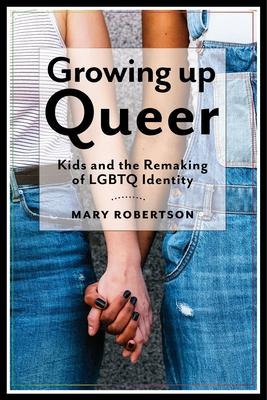LGBTQ kids reveal what it's like to be young and queer today
Growing Up Queer explores the changing ways that young people are now becoming LGBT-identified in the US. Through interviews and three years of ethnographic research at an LGBTQ youth drop-in center, Mary Robertson focuses on the voices and stories of youths themselves in order to show how young people understand their sexual and gender identities, their interest in queer media, and the role that family plays in their lives. The young people who participated in this research are among the first generation to embrace queer identities as children and adolescents. This groundbreaking and timely consideration of queer identity demonstrates how sexual and gender identities are formed through complicated, ambivalent processes as opposed to being natural characteristics that one is born with. In addition to showing how youth understand their identities, Growing Up Queer describes how young people navigate queerness within a culture where being gay is the "new normal." Using Sara Ahmed's concept of queer orientation, Robertson argues that being queer is not just about one's sexual and/or gender identity, but is understood through intersecting identities including race, class, ability, and more. By showing how society accepts some kinds of LGBTQ-identified people while rejecting others, Growing Up Queer provides evidence of queerness as a site of social inequality. The book moves beyond an oversimplified examination of teenage sexuality and shows, through the voices of young people themselves, the exciting yet complicated terrain of queer adolescence.
Book
Growing Up Queer: Kids and the Remaking of LGBTQ Identity
(Write a Review)
Paperback
$29.56
LGBTQ kids reveal what it's like to be young and queer today
Growing Up Queer explores the changing ways that young people are now becoming LGBT-identified in the US. Through interviews and three years of ethnographic research at an LGBTQ youth drop-in center, Mary Robertson focuses on the voices and stories of youths themselves in order to show how young people understand their sexual and gender identities, their interest in queer media, and the role that family plays in their lives. The young people who participated in this research are among the first generation to embrace queer identities as children and adolescents. This groundbreaking and timely consideration of queer identity demonstrates how sexual and gender identities are formed through complicated, ambivalent processes as opposed to being natural characteristics that one is born with. In addition to showing how youth understand their identities, Growing Up Queer describes how young people navigate queerness within a culture where being gay is the "new normal." Using Sara Ahmed's concept of queer orientation, Robertson argues that being queer is not just about one's sexual and/or gender identity, but is understood through intersecting identities including race, class, ability, and more. By showing how society accepts some kinds of LGBTQ-identified people while rejecting others, Growing Up Queer provides evidence of queerness as a site of social inequality. The book moves beyond an oversimplified examination of teenage sexuality and shows, through the voices of young people themselves, the exciting yet complicated terrain of queer adolescence.Paperback
$29.56